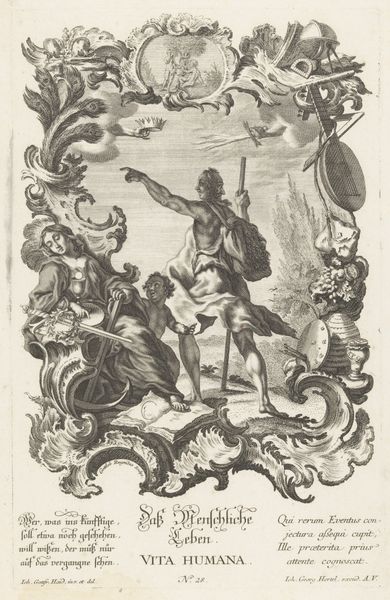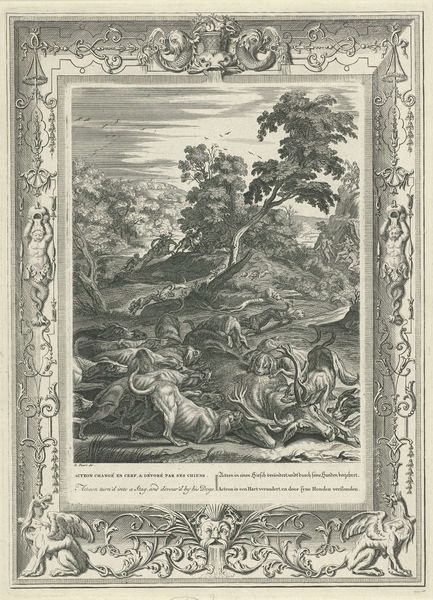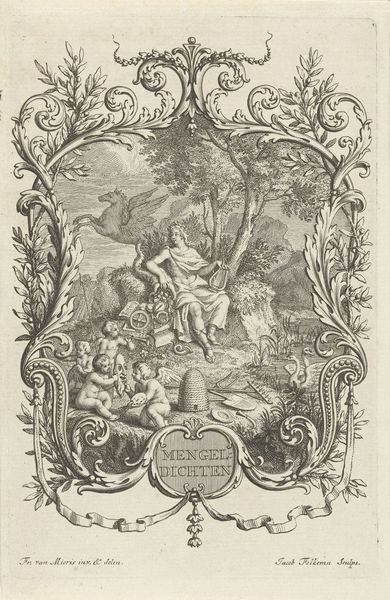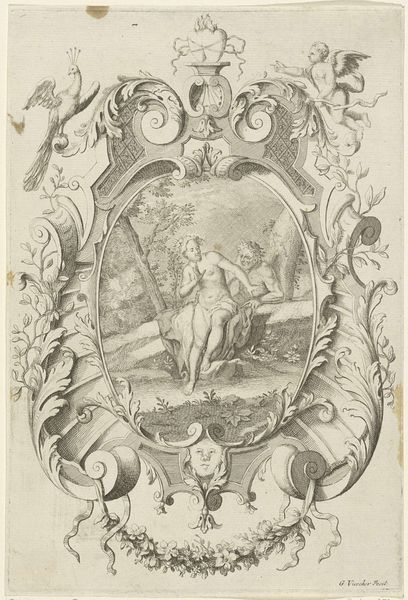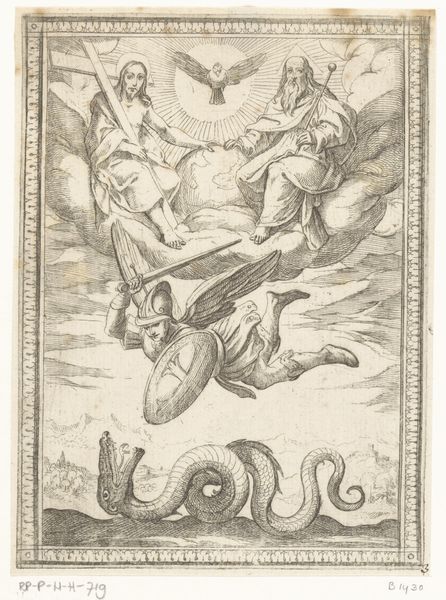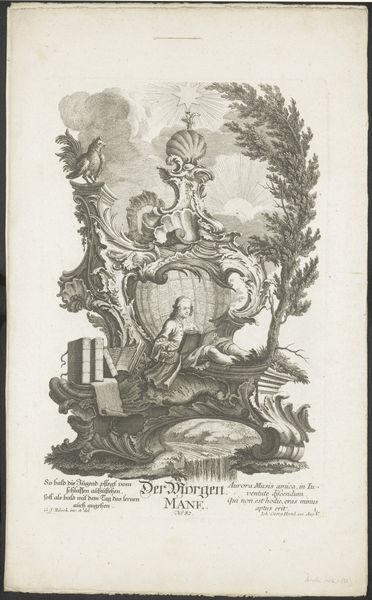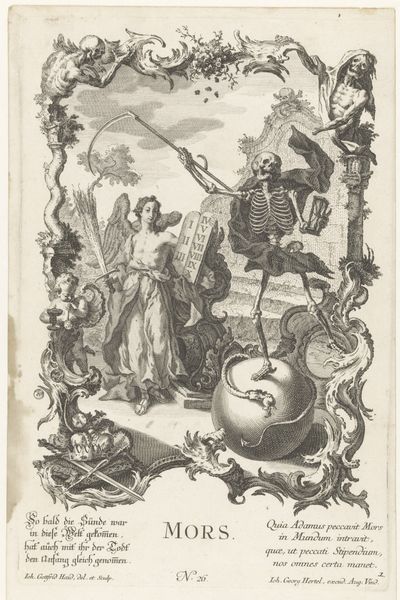
print, engraving
#
baroque
# print
#
old engraving style
#
landscape
#
genre-painting
#
engraving
Dimensions: height 300 mm, width 201 mm
Copyright: Rijks Museum: Open Domain
Curator: Take a look at "Zomer," or "Summer," an engraving created between 1705 and 1764, here at the Rijksmuseum. It is quite detailed in the old engraving style, framed with incredibly ornate baroque designs. What strikes you most initially? Editor: The visual dichotomy grabs me instantly. The chaotic labor of the field workers contrasted with this serene, almost apathetic, reclining figure nestled amidst lush vegetation and skulls. There’s a social narrative playing out here that’s really quite compelling. Curator: Exactly. The central scene showcases agricultural work – harvesting, transporting, all that entails to create societal building blocks. Its cultural currency is more easily grasped once we see how such images legitimized certain social hierarchies. Editor: I wonder what was its targeted demographic? While its artistic merit cannot be denied, did only those with wealth and power enjoy these types of engravings? Curator: Given the likely production context, such works often served multiple purposes, it would hang as decor or art for a collector and, perhaps, become part of didactic series, reinforcing notions about social order and the role of labor. How does the work engage with the power of visibility of laborers who might have been systematically denied certain fundamental rights? Editor: Ah, there is a question to unpack for sure. In foregrounding manual labor in a period marked by both nascent capitalism and entrenched social stratification, the artwork unwittingly highlights existing socio-economic disparities in Dutch society. I find the seemingly 'simple' art brings forward very complex historical themes of power. Curator: A point very well-made; considering who it centers and for whom this centerdness functions underscores crucial socio-political relations in this moment. Editor: Considering the themes of social positionality brought into relief by this discussion, and combined with my immediate emotional impression when first approaching this piece of artwork, makes this, in total, an enlightening look into 18th-century Netherlands and, in our moment, brings to light important and current themes to wrestle with. Thank you.
Comments
No comments
Be the first to comment and join the conversation on the ultimate creative platform.


